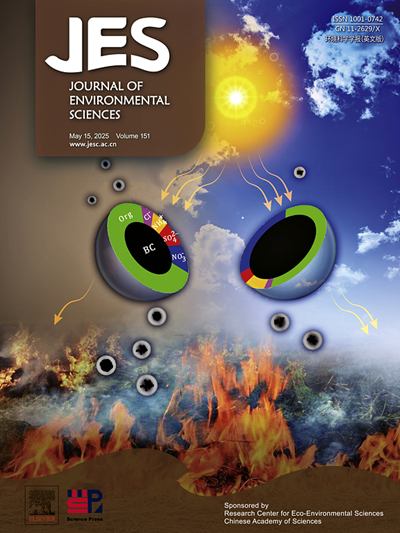Wetland types shape microbial function related to soil phosphorus cycling based on metagenomics analysis
IF 6.3
2区 环境科学与生态学
Q1 ENVIRONMENTAL SCIENCES
引用次数: 0
Abstract
Limitations regarding phosphorus (P) are widespread in ecosystems. Understanding the impacts of the wetland types on microbially mediated soil P availability and cycling is essential for the effective management of wetlands. In this study, the Beidagang wetland, Baodi paddy field, and Dahuangpu wetland in Tianjin, China were chosen as representatives of the coastal wetland (B), constructed wetland (R), and swampy wetland (W), respectively. Sequential P extraction and metagenomics approaches were adopted to explore the soil P fraction and microbially regulated P cycle. Proteobacteria were the predominant microbes-related soil P cycle. IMPA, gph, rsbU_P, ugpQ, and glpK genes were dominant in organic P (Po) mineralization, while gcd, ppa, and ppx genes were dominant in inorganic P (Pi) solubilization. The salinity, NO3--N concentration, the ratio of total carbon to total nitrogen (TC/TN), total carbon (TC), and the ratio of soil organic carbon to total P (SOC/TP) were the co-drivers of microbially mediated P cycle processes. Microbial network complexity-relate P cycle was the lowest in the coastal wetland. Salinity and NO3--N exhibited a significant negative relation to the abundance of most genes-relate Pi solubilization and a remarkable positive correlation with the abundance of many genes-relate Po mineralization. These findings demonstrated that Po mineralization tended to occur in habitats with high salinity and nutrient imbalances, whereas the dissolution of Pi was prone to occur in low-salinity environments with relatively balanced soil nutrients. This study improves understanding of how salinity and soil nutrients jointly shape microbial-regulated soil P cycle in different types of wetlands.

基于宏基因组学分析的湿地类型塑造与土壤磷循环相关的微生物功能
对磷(P)的限制在生态系统中是普遍存在的。了解湿地类型对微生物介导的土壤磷有效性和循环的影响,对湿地的有效管理至关重要。本研究选取中国天津北大港湿地、宝坻水田和大黄埔湿地分别作为滨海湿地(B)、人工湿地(R)和沼泽湿地(W)的代表。采用序贯提取和宏基因组学方法研究土壤磷组分和微生物调控的磷循环。与土壤磷循环相关的微生物以变形杆菌为主。IMPA、gph、rsbU_P、ugpQ和glpK基因在有机磷(Po)矿化中占主导地位,而gcd、ppa和ppx基因在无机磷(Pi)溶解中占主导地位。盐度、NO3—N浓度、全碳/全氮比(TC/TN)、全碳比(TC)和土壤有机碳/全磷比(SOC/TP)是微生物介导的磷循环过程的共同驱动因子。滨海湿地微生物网络复杂性相关磷循环最低。盐度和NO3—N与大多数与Pi溶解相关的基因丰度呈显著负相关,与许多与Po矿化相关的基因丰度呈显著正相关。这些结果表明,在高盐度和养分不平衡的生境中,Po矿化倾向发生,而在土壤养分相对平衡的低盐度环境中,Pi溶解倾向发生。本研究提高了对不同类型湿地中盐度和土壤养分如何共同塑造微生物调控的土壤磷循环的认识。
本文章由计算机程序翻译,如有差异,请以英文原文为准。
求助全文
约1分钟内获得全文
求助全文
来源期刊

Journal of Environmental Sciences-china
环境科学-环境科学
CiteScore
13.70
自引率
0.00%
发文量
6354
审稿时长
2.6 months
期刊介绍:
The Journal of Environmental Sciences is an international journal started in 1989. The journal is devoted to publish original, peer-reviewed research papers on main aspects of environmental sciences, such as environmental chemistry, environmental biology, ecology, geosciences and environmental physics. Appropriate subjects include basic and applied research on atmospheric, terrestrial and aquatic environments, pollution control and abatement technology, conservation of natural resources, environmental health and toxicology. Announcements of international environmental science meetings and other recent information are also included.
 求助内容:
求助内容: 应助结果提醒方式:
应助结果提醒方式:


